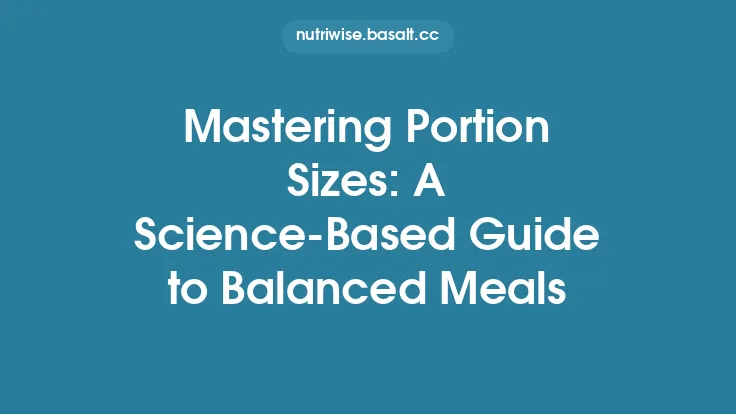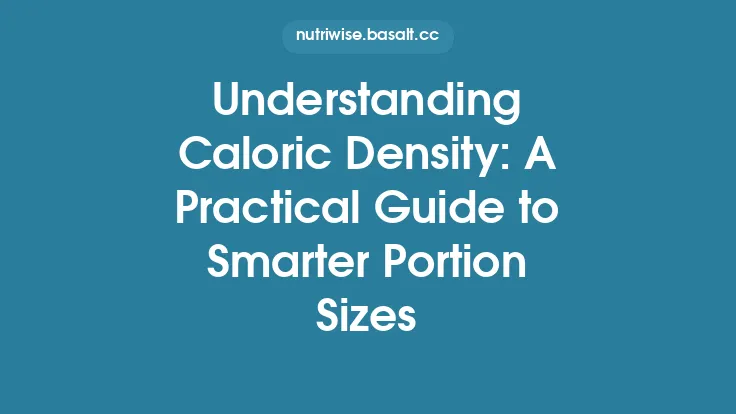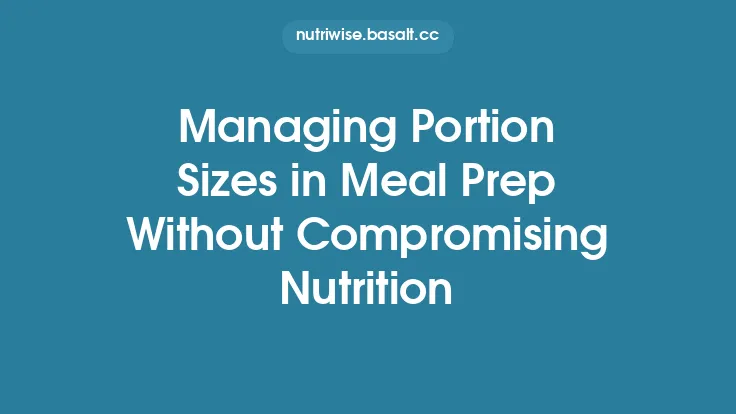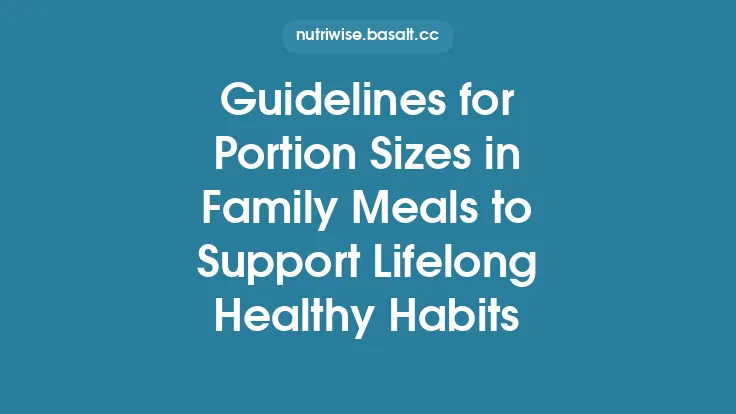When you’re planning meals, prepping snacks, or simply trying to keep track of what you’re putting on your plate, knowing how much you’re actually eating is essential. While a kitchen scale offers the most precise way to determine weight, many home cooks either don’t own one or find it inconvenient to pull out for every ingredient. Fortunately, there are a variety of reliable, scale‑free techniques that let you measure food accurately enough for most cooking and nutrition‑tracking purposes. This guide walks you through the science behind those methods, the tools you can repurpose, and step‑by‑step procedures you can adopt in any kitchen.
Why Measuring Without a Scale Still Works
Weight and volume are two different ways of describing the same quantity of matter. In many culinary contexts, recipes are written in volume (cups, tablespoons, milliliters) because those measures are easy to reproduce with everyday kitchen tools. When you understand the relationship between weight and volume for a given food, you can switch between the two without sacrificing accuracy.
Key points to keep in mind:
- Density matters. A cup of flour weighs far less than a cup of honey because the two substances have different densities. Knowing the typical density of a food group lets you convert volume to weight (or vice versa) with confidence.
- Cooking changes mass. Water loss, fat rendering, and moisture absorption all affect the final weight of a dish. Accounting for these changes is part of the measurement process.
- Consistency is king. Even if a method isn’t perfectly exact, using the same technique each time yields comparable results, which is often sufficient for recipe scaling and nutrition tracking.
Understanding Volume vs. Weight
Before diving into specific techniques, it helps to grasp the basic physics:
| Property | Volume | Weight |
|---|---|---|
| Definition | The amount of space an object occupies (e.g., cups, milliliters) | The force exerted by gravity on an object’s mass (e.g., grams, ounces) |
| Measured with | Measuring cups, spoons, graduated cylinders | Scales |
| Influenced by | Shape, packing, air pockets | Gravity, mass |
| Conversion | Requires density (Weight = Volume × Density) | Direct measurement |
For most foods, standard reference tables list average densities. For example:
- All‑purpose flour: ~125 g per cup
- Granulated sugar: ~200 g per cup
- Olive oil: ~215 g per cup
- Cooked rice: ~185 g per cup
These figures are averages; slight variations occur based on brand, humidity, and how the ingredient is packed. Nonetheless, they provide a solid baseline for scale‑free measurement.
Using Standard Kitchen Measures Effectively
Most households already own a set of measuring cups and spoons. To maximize their accuracy:
- Choose the right type of cup. Dry‑measure cups (the nested set) are designed for solids; liquid‑measure cups (the tall, transparent ones) are calibrated for fluids. Using each for its intended purpose reduces systematic error.
- Level off dry ingredients. After scooping flour or sugar, run a straight edge (the back of a knife works well) across the top to remove excess. This prevents “packed” measurements that can add 10‑20 % more weight.
- Spoon and level for flour. Instead of scooping directly with the cup, spoon flour into the cup and level it. This technique avoids compacting the flour, which would otherwise increase its weight.
- Use the “dip and sweep” method for brown sugar. Lightly pack the sugar into the cup, then sweep away any excess with a flat utensil. This yields a consistent, moderately packed measurement.
- Measure liquids at eye level. When using a liquid‑measure cup, place it on a flat surface and look straight across the meniscus to avoid parallax error.
By adhering to these simple habits, you can achieve repeatable volume measurements that translate reliably to weight using the density tables above.
The Water Displacement Method for Irregular Foods
Certain foods—chunks of fruit, irregularly shaped vegetables, or a slab of cheese—defy easy volume measurement. The classic water displacement technique, originally devised by Archimedes, offers a practical solution:
- Select a container large enough to fully submerge the food item without spilling. A clear measuring cup or a graduated bowl works well.
- Record the initial water level. Fill the container with enough water to cover the item once it’s placed inside, noting the volume (e.g., 250 ml).
- Submerge the food gently, ensuring no air bubbles cling to its surface. Record the new water level (e.g., 340 ml).
- Calculate the displaced volume. Subtract the initial volume from the final volume (340 ml – 250 ml = 90 ml). This displaced volume equals the food’s volume.
- Convert to weight. Apply the appropriate density. For example, if the food is a firm cheese with a density of ~1.1 g/ml, the weight is 90 ml × 1.1 g/ml ≈ 99 g.
This method works for any solid that does not dissolve or absorb water quickly. For porous items (e.g., bread), a brief soak may be necessary to eliminate trapped air, but be mindful of water absorption that could skew the result.
Leveraging Food Labels and Package Information
Pre‑packaged foods often provide the most straightforward weight‑to‑volume clues:
- Serving size statements (e.g., “1 cup (240 ml) = 150 g”) give you a direct conversion factor for that specific product.
- Nutrient tables list grams of macronutrients per serving, which can be cross‑checked against the listed volume.
- “Net weight” on the package tells you the total weight of the contents. If you know the total volume (e.g., the container’s capacity), you can derive an average density for that product.
When you encounter a new product, take a moment to note its label data. Over time, you’ll build a personal reference library that speeds up future measurements.
Estimating Weight Through Density and Common References
If you lack a label or a density table, you can still make educated guesses using everyday reference objects:
| Reference Object | Approximate Volume | Approximate Weight (Water) |
|---|---|---|
| Standard soda can (12 oz) | 355 ml | 355 g |
| Baseball | ~200 ml (when submerged) | 200 g |
| Golf ball | ~40 ml | 40 g |
| Small apple (average) | ~150 ml | 150 g |
Because water’s density is 1 g/ml, the weight of any object that displaces a known volume of water is roughly equal to that volume in grams. For foods with densities close to water (e.g., most fruits, cooked vegetables), this provides a quick estimate. For denser items (e.g., nuts, cheese), adjust upward by 10‑30 % based on typical density ranges.
Cooking Yield Calculations: From Raw to Ready
Many recipes list ingredient amounts in their raw state, yet you often need the cooked weight for portioning. Understanding typical yield percentages helps you back‑calculate:
| Food Type | Typical Yield (Cooked/Raw) |
|---|---|
| Pasta (dry) | 2.5 – 3 × increase |
| Rice (dry) | 3 × increase |
| Chicken breast (raw) | 0.75 × (25 % loss) |
| Ground beef (raw) | 0.80 × (20 % loss) |
| Beans (dry) | 2.5 × increase after soaking & cooking |
Example: A recipe calls for 1 cup of dry rice (≈185 g). Using the 3× yield, the cooked rice will weigh roughly 555 g. If you need to serve 150 g portions, you can divide the cooked batch into about 3‑4 servings without ever stepping on a scale.
To apply this method:
- Identify the raw ingredient’s volume or weight using the techniques above.
- Multiply by the appropriate yield factor (consult a reliable cooking reference or a trusted online database).
- Divide the final cooked weight by the desired portion size.
This approach is especially useful for batch cooking, meal prep, and bulk recipe scaling.
Digital Solutions: Apps and Image‑Based Estimations
Modern smartphones bring powerful image‑recognition and database tools to the kitchen:
- Food‑logging apps (e.g., MyFitnessPal, Cronometer) often include a “visual entry” feature where you photograph a plate, and the app suggests a weight based on trained algorithms.
- Portion‑estimation apps use augmented reality to overlay a virtual measuring cup onto the food, giving you a real‑time volume readout.
- Barcode scanners instantly retrieve label data, including serving size and weight, which you can then apply to your own portion.
While these tools are not a substitute for a scale in high‑precision contexts (e.g., baking delicate pastries), they provide a convenient, repeatable method for everyday cooking and nutrition tracking.
Creating Your Own Reference Library
Over time, you’ll notice patterns in the foods you prepare most often. Building a personal cheat sheet accelerates future measurements:
- Record each food’s volume‑to‑weight conversion after you’ve measured it once with a scale (or a highly reliable method). Note the source (e.g., USDA database, label, personal test).
- Group foods by similarity (e.g., all leafy greens, all nuts) and assign an average density to the group.
- Print or store the table on your phone for quick reference during meal prep.
- Update periodically as you encounter new brands or variations.
A well‑maintained library reduces the mental load of conversion and improves consistency across meals.
Practical Tips for Consistency and Accuracy
- Standardize your measuring tools. Use the same set of cups and spoons for all recipes; mixing different brands can introduce slight volume differences.
- Mind temperature. Liquids expand when warm and contract when cold. For precise work, let hot liquids cool to room temperature before measuring.
- Avoid “scooping” dry ingredients directly from the container unless the recipe explicitly calls for it; this habit often leads to over‑packing.
- Use a ruler for elongated items. A piece of fish or a steak can be measured by length and thickness, then converted to volume using the formula for a rectangular prism (Volume = length × width × height). Apply the appropriate density to obtain weight.
- Document any adjustments. If you notice a recipe consistently yields a different weight than expected, note the discrepancy and tweak your conversion factor for future use.
By mastering these scale‑free techniques, you gain the flexibility to measure, portion, and track foods accurately without the need for a dedicated kitchen scale. Whether you’re a casual home cook, a meal‑prep enthusiast, or someone simply looking to understand their food better, the methods outlined here provide a reliable, evergreen toolkit for everyday culinary success.





